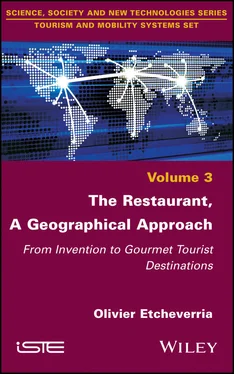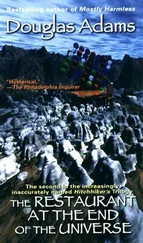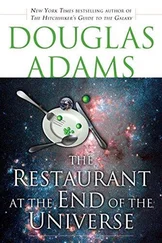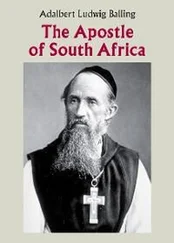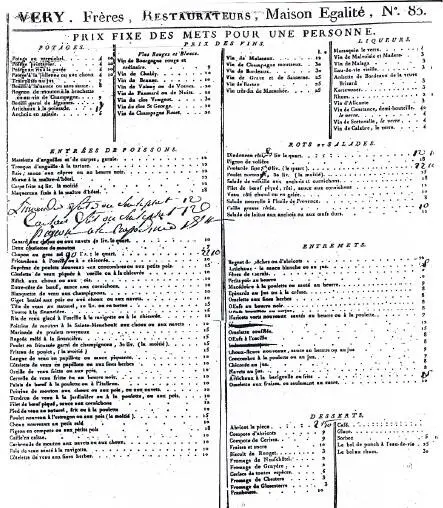
Figure 2.1. Menu from the restaurant Véry
In the center of Paris, the first restaurants were established in the Palais-Royal district. Rolande Bonnain says:
“At the end of the 18th Century, the first restaurants were found around the Palais-Royal, which was the old center of Paris. Small streets, luxury shops, average restaurants, gambling houses, the district attracted youth, politics, Parisian literature.” [BON 75, author’s translation]
The Palais-Royal and its surrounding area provided the necessary conditions, in terms of market, supply and demand, for the establishment of the first restaurants.
On the supply side, Valérie Ortoli-Denoix explains: “The abolition of corporations unleashed competition, and pork butchers, sellers of roast meat, pastry chefs… no longer had a monopoly on their specialities.” [ORT 90, p. 19, author’s translation]
On the demand side, it is clear that there was a dense and diversified pool of potential customers:
“Legislators who arrived in the capital, provincial legislators who were attracted to the Assembly [and] new wealthy people – for fear of settling down too quickly – formed the cohort of potential clients ready to sit down to eat. And why run around the streets when the best are at the door of the Assembly, in the heart of the city?” [ORT 90, p. 19]
Indeed, Jean-Robert Pitte insists on the relationship between the development of restaurants and the presence of “revolutionary” customers at the Palais-Royal:
“The increase of quality restaurants in Paris dates back to the Revolution. It is true, as has often been said, that a number of talented cooks then lost their masters, emigrated or were executed by guillotine. This was the case for Méot , the chef to Prince de Condé, who settled in 1791 on rue de Valois. But the other reason was the clientele, i.e. the revolutionary leaders themselves. They were determined to remove all symbols of the Ancien Régime 1 or religion, but they were determined not to throw the baby out the bathwater. Of the entire cultural and artistic building erected by the monarchy and the court, gastronomy was one of the most easily recoverable, and Marat or Danton were never suspected of being enemies of the Republic because they come to Méot ’s sumptuous dinner […]. The provincial deputies present in Paris throughout the Revolution, who lived in pensions, provided a sufficiently large and stable clientele to allow restaurants to multiply.” [PIT 91, pp. 161–162, author’s translation]
In the aftermath of the French Revolution, restaurants, which multiplied very rapidly, seduced and encountered the new gastronomic expectations of Parisian urban customers.
Jean-Paul Aron begins his book Le mangeur du XIXe siècle by presenting the event represented by the opening of the Robert restaurant:
“On July 17, 1789, Prince de Condé went into exile, leaving a plethora of first-rate artists, roasting chefs, sauce chefs and pastry chefs, unemployed. Before the end of the year, Robert, who had managed his kitchens, founded a restaurant. This reclassification was more than a symbol: it crystallized scattered aspirations; it kicked off a new diet.” [ARO 89, p. 17, author’s translation]
Their real and ideal sociocultural role can be specified:
“Because they were born from the fall of the nobles, restaurant cooks and, by analogy, bourgeois houses enjoyed incomparable prestige. In Parisian mythology, they play a prominent role. They regulate worldly life, love and business, and they lend their frameworks to the imagination. The memory of the pioneers hangs over the dinners of the whole century.” [ARO 89, pp. 118–119, author’s translation]
Jean-Paul Aron evokes a “greedy opinion” that was nourished by the relationship between the sphere of restaurateurs and the world of the bourgeoisie:
“Under the Directory, in the street, in the press, in clubs, in gambling rooms, there was a greedy opinion. The glory of restaurants emerged from this sound network; between the right places and the new society a market is concluded: it provided subsidies, they created an unusual image of excellence. An advantageous treatise: the bourgeois enriched the bosses who illustrated them in return. The event disrupted perspectives, grayed the imagination.” [ARO 89, pp. 311–312, author’s translation]
The introduction deputies at the Palais-Royal explain the enthusiasm for regional kitchen restaurants:
“Arriving from all parts of the kingdom, the deputies had kept their provincial customs. The influence of those from Provence was particularly noticeable: the people of Marseille who came to celebrate the Federation’s feast brought along with the hymn of Rouget de Lisle the use of tomatoes, which had been used very sparingly until then, oil and garlic cooking, which would henceforth perfume the agape of the revolutionists.” [AND 55, pp. 32–33, author’s translation]
Thus, the restaurant Les Trois Frères Provencaux acquired a great notoriety:
“Around the same time, Les Trois Frères Provencaux , which served a bouillabaisse and cod brandade, settled in the neighborhood [Palais-Royal]. Even if we can imagine that the Provençal cuisine of this establishment lost part of its local color under the Parisian sky, its introduction represented a small revolution. Culinary exoticism was gaining recognition, and eating out implied the acceptance – or the search – for a certain change of scenery.” [PIT 91, p. 160]
René Héron de Villefosse reports on the opening conditions of the restaurant:
“Rue Helvétius – the former name of our rue Sainte-Anne, at the corner of rue de Louvois – had just opened the restaurant of three Marseille partners: Maneille, Barthélemy, known as Trouin, and Simon, brothers-in-law and whose famous name was first that of the Frères Provençaux . They brought from the banks of the Durance the secret of cod brandade and Provençal-style lamb chops. Gaston Derys even added that they made known in Paris bouillabaisse, green olives and the red mullet of Marseille. With this barber from Porte Saint-Denis, where all the Francs-Comtois used to meet to taste cornstarch, they can be considered as the inventors of regional cuisine in the capital. They are about to move into the Palais-Égalité.” [HER 56, pp. 133–134, author’s translation]
In the past (see Figure 2.2), the concentration of restaurants was remarkable and it is the same situation today (see Figure 2.3), at the Palais-Royal.
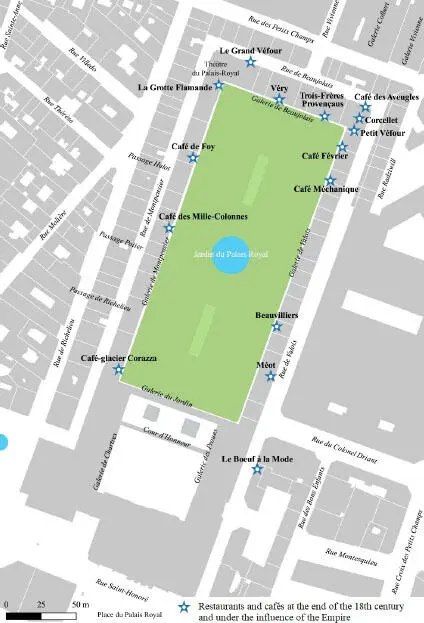
Figure 2.2. Map of restaurants and cafés at the Palais-Royal at the end of the 18th Century and under the influence of the Empire (source: according to [PIT 91, p. 163]). For a color version of this figure, see www.iste.co.uk/etcheverria/restaurant.zip
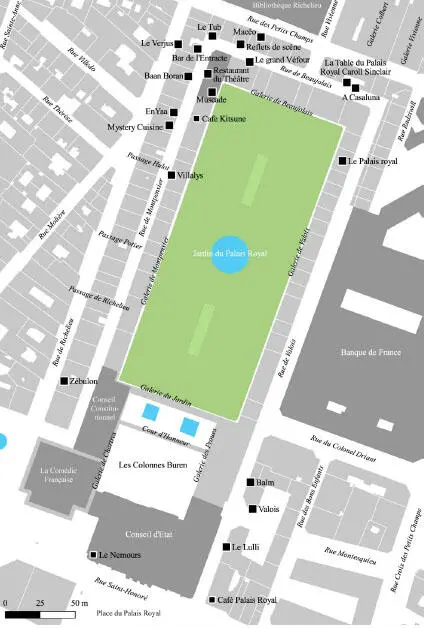
Figure 2.3. Map of restaurants and cafés at the Palais-Royal today (source: field research). For a color version of this figure, see www.iste.co.uk/etcheverria/restaurant.zip
Adil Alkenzawi describes the Palais-Royal as an urban plateau in the center of the city of Paris:
“The Palais-Royal is a fundamental example of the construction of places in the 18th century; it transforms the sensitivity of an era and the way in which the ‘world’ is created through architecture, appropriated and appreciated. It includes a set of buildings located in the center of Paris near the Louvre, built on a rectangular urban plateau perpendicular to the Seine, which covers a flat area of 405 by 123 meters, between rue Saint-Honoré, the Place du Palais-Royal and the Place du Théâtre-Français, Rue de Montpensier, Rue de Beaujolais and Rue de Valois. Rectangle in shape, located on the north-south axis, in a superb setting of a cooled inferno, where the French Revolution was fuelled. Over the centuries, the roles of the Palace, (which became royal in 1642 by Richelieu’s donation to Louis XIII), varied from the residence of the royal ‘favorites’ to those of administrative offices during the Empire. The Palace, whose entrances are located respectively on the four cardinal directions, currently houses the State Council, the Constitutional Council, the Ministry of Culture and the Comédie-Française state theater.” [ALK 08, author’s translation]
Читать дальше
